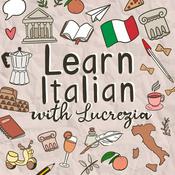12 episódios

"Good is a point of view, Anakin..."
24/10/2021 | 31min
Socials! @intralocal @d0ug7a5 [email protected] In Buddhism, the main duality considered is generally "suffering" and "enlightenment". Quite different to "good" and "evil" or the "good" and "bad" lens through which we often experience life. Or is it? Evil is a pretty loaded term. Can we ever know whether something is wholly "good" or "bad"? A lot of this is about the stories we choose to tell ourselves. "Good is a point of view Anakin" - is thinking "beyond" good and bad just a trap that leads to us being evil? Concept: Good and Evil - Buddhism suggests we have an innate sense of 'good' and 'evil'. If we are looking to be kind, then it just follows naturally right? - There's no sense of "absolute evil" in Buddhism really. - In Buddhist reincarnation, a demon can use karma to attain rebirth as something less unpleasant. "The suffering of demons in the hell realms is invoked negatively to warn practitioners to be more diligent in their spiritual efforts—in part to avoid rebirth among these unfortunate beings." - This is not at all an idea unique to Buddhism - Beyond Good and Evil - Nietzsche Parable: The Horse A farmer and his son had a beloved horse who helped the family earn a living. One day, the horse ran away and their neighbours exclaimed, “Your horse ran away, what terrible luck!” The farmer replied, “Maybe so, maybe not.” A few days later, the horse returned home, leading a few wild horses back to the farm as well. The neighbours shouted out, “Your horse has returned, and brought several horses home with him. What great luck!” The farmer replied, “Maybe so, maybe not.” Later that week, the farmer’s son was trying to break one of the horses and she threw him to the ground, breaking his leg. The neighbours cried, “Your son broke his leg, what terrible luck!” The farmer replied, “Maybe so, maybe not.” A few weeks later, soldiers from the national army marched through town, recruiting all boys for the army. They did not take the farmer’s son, because he had a broken leg. The neighbours shouted, “Your boy is spared, what tremendous luck!” To which the farmer replied, “Maybe so, maybe not. We’ll see.” Listener question: - What are some of your favourite resources for further reading on Buddhism? (Alice, Canberra) - https://tinybuddha.com/ - https://tricycle.org/ - https://vice.com/ - Full Catastrophe Living - Jon Kabat-Zinn - The Subtle Art of Not Giving A Fuck - Mark Manson Links: https://bit.ly/3EVIgPd Jay Mavani: Parable of the horse - Maybe so, maybe not. We'll see. The full parable of the horse along with an analysis of the parable by Jay https://www.oxfordbibliographies.com/view/document/obo-9780195393521/obo-9780195393521-0171.xml Oxford Bibliographies: Demons and the demonic in Buddhism The summary of a long-read analysis on Buddhist concepts of the demonic

#bekind - A guide to metta loving kindness meditation
10/10/2021 | 34min
Socials, you say!? @intralocal @d0ug7a5 [email protected] Issue: - The traditional Buddhist notion of "metta" is often translated as 'loving kindness' or 'compassion'. If you do Headspace meditations and do visualisations involving being flooded with golden light, that is actually a visualisation of "metta". - "Be kind" - it's a hashtag; it sounds simple and easy. Let's see if it is. - Metta development/cultivation ("metta bhavana") - 'loving kindness meditation'. Concept: The 5 stages of metta meditation 1. Make friends with yourself (flood yourself with metta) 2. Wish a loved one happiness (offering metta, useful for e.g. envy, greed, malice - lots of practical examples of this) 3. Wish a stranger happiness (offering metta to people where it is not as obviously having a direct impact on us) 4. Wish an enemy happiness (offering metta to someone we dislike; hard) 5. Wish the cosmos happiness (offering metta to as wide a circle as possible) Parable: Sariputta and the Brahmin- Sariputta was out on his alms round and a Brahmin decided to test his patience by sneaking up behind him and giving him an almighty smack- Sariputta didn't react so the Brahmin felt bad and apologised- Sariputta accepted but this wasn't enough so the Brahmin brought him round for dinner- An angry mob also came to dinner so Sariputta gave the Brahmin his alms bowl so they, not wanting to break it, would leave and go home- Later, the Buddha reflected on the situation:"The mob should not strike the brahmin, and the brahmin should not set anger loose. Shame on the one who hits a brahmin and greater shame on the one who sets anger loose. Whenever one turns away from the intent to harm,Suffering is allayed."Listener question:Do you believe in reincarnation? What would you like to come back as? - Jay (they/them), ManchesterLinks:https://bit.ly/3i1vPaC Yoga Anytime: The 5 stages of loving-kindness A webseries by Yoga Anytime that breaks down the stages of Loving Kindness into an episode per stage, guiding you in depth through the meditation https://bbc.in/3AwEMQp BBC Bitesize: Good, evil and suffering A bitesize analysis of the Buddhist approach to suffering, presented as part of the BBC's revision guide to GCSE Religious Studies https://bit.ly/2XDBU5I Tricycle: Overcoming ill will A long-read reflection on how to change the way we react to those who anger us

Dougie's Twitter beef! THEY SAID WHAT!?
26/9/2021 | 33min
Socials: @d0ug7a5 @intralocalNews and social media are more divisive than ever. Covid has exposed a lot of mis- and disinformation and conspiracy theorists. It's a natural response to be reactive and combative. This is leading to the breakdown of relationships. What can we do about it? Parable: The Wild ElephantOne of the many lives of the Bodhisattva was spent as an ascetic. This one time, he came back as the most superior ascetic in the whole order and everyone used to follow him. There was another ascetic in the same order who was jealous of the Bodhisattva. So, to remove the Bodhisattva from his path, he asked some elephant keepers to intoxicate a ferocious elephant by giving it liquor and then letting it loose on the Bodhisattva’s path. The ferocious and drunk elephant was let loose on the street and people ran in every direction to save their lives. The Bodhisattva continued walking down the path and looked calm. Suddenly, a woman, who was very frightened, accidentally dropped her child at the feet of the Bodhisattva. The wild elephant walked up to them and as it was about to trample them, the Bodhisattva placed his hand on its forehead and gently stroked it. Suddenly, the wild elephant became calm and bowed in front of him. Everyone was amazed to see this miracle. Questions: - From Max in Newton Aicliffe - “Where do you think psychedelics fit into the picture of Buddhism & spirituality? Some people cite them as catalysts for spiritual growth & great tools for personal development whereas others would argue they’re a lazy attempt to by-pass the work required to gain spiritual enlightenment & peace. Please share your thoughts.” - Joao from Pará - “You talk a lot about meditation practice. Are there things you do in your day to day lives - other than literally sitting down to meditate - where you think some of the same benefits of meditation might apply?” - Luke in London - what kind of microphones are you using? Links: https://bit.ly/3izpZNb Kidsgen: Stories from Buddha Teachings (The Wild Elephant) The location of the short version of the wild elephant story, along with many others https://wapo.st/3BtkiJh The Washington Post: Elephant Walk tests the Buddhist principles of a trained mind and inner peace A medium length examination of the relevance of the wild elephant to the concept of mindfulness and the importance of meditation https://bit.ly/3wMsTmy Wikipedia: The Noble Eightfold Path A basic summary of the Eightfold Path

Not your problem?
12/9/2021 | 24min
With so much flux right now, the world can feel like it's getting on top of us. How many of these problems are actually truly ours? Are we defined by our problems? Concepts:Ego (See season 1 episode Big Ego)Inner and outer problems (See parable)Acceptance If you can solve the problem,Then what is the need of worrying?If you cannot solve it,Then what is the use of worrying?-Shantideva In Modern Buddhism, Geshe Kelsang says there are two types of problem, an inner and an outer problem:We should understand that our problems do not exist outside of our self, but are part of our mind that experiences unpleasant feelings. When our car, for example, has a problem we usually say “I have a problem”, but in reality it is the car’s problem and not our problem.The car’s problem is an outer problem, and our problem, which is our own unpleasant feeling, is an inner problem. These two problems are completely different. We need to solve the car’s problem by repairing it, and we need to solve our own problem by controlling our attachment to the car. Linkshttps://bit.ly/3stJGdF Tiny Buddha: 3 steps to practice acceptance & have a peaceful life Simple, practical steps you can take to accept the world around you as it is and find peace when things aren't how you wish they were https://bit.ly/3iU5hZN Kadampa Life: How to stop worrying about anything, everything and nothing The source of the above car problem quote and a deeper dive on understanding which problems you can change and which you have to accept

Why me? :(
29/8/2021 | 19min
Cal: @intralocalDougie: @d0ug7a5A lot of people have found themselves suffering from conditions and situations they didn't expect, such as long covid, the loss of many loved ones, other health issues and personal catastrophes .It's human nature to get hung up on why me, spiraling in grief and self pity. So how can we move away from that?Concept:The Four Noble Truths3. That type of suffering can be avoidedThe Eightfold Path6. Right Effort: preventing the arising of unwholesome states, and generating wholesome states, the bojjhagā (seven factors of awakening). This includes indriya-samvara, "guarding the sense-doors", restraint of the sense faculties.7. Right Mindfulness (sati; Satipatthana; Sampajañña): "retention", being mindful of the dhammas ("teachings", "elements") that are beneficial to the Buddhist path.[34][note 4] In the vipassana movement, sati is interpreted as "bare attention": never be absent minded, being conscious of what one is doing; this encourages the awareness of the impermanence of body, feeling and mind, as well as to experience the five aggregates (skandhas), the five hindrances, the four True Realities and seven factors of awakening.Upādāna - clingingParables: The Second Arrow"When touched with a feeling of pain, the ordinary uninstructed person sorrows, grieves, and laments, beats his breast, becomes distraught.So he feels two pains, physical and mental.Just as if they were to shoot a man with an arrow and, right afterward, were to shoot him with another one, so that he would feel the pains of two arrows…”OR"In the parable of the arrow, sometimes called the second arrow, you picture yourself walking through a forest. Suddenly, you’re hit by an arrow. This causes you great pain. But the archer isn’t done. Can you avoid the second one? That’s the arrow of emotional reaction. Dodge the second by consciously choosing contemplation. It will help you avoid a lot of suffering.After telling the two arrow parable, the Buddha said, “In life, we cannot always control the first arrow. However, the second arrow is our reaction to the first. And with this second arrow comes the possibility of choice.”"RAIN:RecogniseAcceptInvestigateNurture or Non-identificationLinks:https://bit.ly/3kurizo Vox: It’s okay to be doing okay during the pandemicA thought piece on how people feeling survivors' guilt during COVID can use mindfulness to give themselves a break and refocus on helping where they canhttps://bit.ly/3z6Sybe Tricycle: The Second ArrowA short quotation-formatted version of the second arrow parable. Tricycle is a nonsectarian Buddhist quarterly magazine based in New Yorkhttps://bit.ly/2VUIqUZ Big Think: This Buddhist Parable Can Ease Your Suffering During a CrisisAn in-depth analysis on the second arrow and its place in Buddhist philosophyhttps://bit.ly/3wMsTmy Wikipedia: The Noble Eightfold PathA basic summary of the Eightfold Pathhttps://bit.ly/3eJThaT Wikipedia: The Four Noble TruthsA basic summary of the Four Noble Truthshttps://bit.ly/3ygZcuI Tara Brach: RainAn overview of the RAIN guide to self compassion
Mais podcasts de Ensino
Podcasts em tendência em Ensino
Sobre Secular Buddhism for Skeptical Atheists
Ouça Secular Buddhism for Skeptical Atheists, Podcasts do Clóvis e muitos outros podcasts de todo o mundo com o aplicativo o radio.net

Obtenha o aplicativo gratuito radio.net
- Guardar rádios e podcasts favoritos
- Transmissão via Wi-Fi ou Bluetooth
- Carplay & Android Audo compatìvel
- E ainda mais funções
Obtenha o aplicativo gratuito radio.net
- Guardar rádios e podcasts favoritos
- Transmissão via Wi-Fi ou Bluetooth
- Carplay & Android Audo compatìvel
- E ainda mais funções


Secular Buddhism for Skeptical Atheists
baixe o aplicativo,
ouça.







































